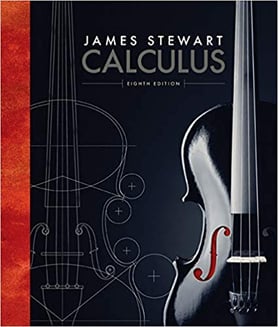
This posts contains a Teaching Explanation.
You can buy Calculus by Stewart here.
Why You Should Trust Me: I’m Dr. Fred Zhang, and I have a bachelor’s degree in math from Harvard. I’ve racked up hundreds and hundreds of hours of experience working with students from 5th grade through graduate school, and I’m passionate about teaching. I’ve read the whole chapter of the text beforehand and spent a good amount of time thinking about what the best explanation is and what sort of solutions I would have wanted to see in the problem sets I assigned myself when I taught.
Stewart's Calculus 8th Ed.: Question 2, Page 19 Answer Explanations
Question: If $f(x) = (x^2-x)/(x-1)$ and $g(x)=x$, is it true that f=g?
Page in 8th Edition: 19
Short Answer: No, $f≠g$. For input $x = 1$, $f(1)$ is undefined since the denominator is zero, whereas $g(1) = 1$.
Homework Answer: Same as short answer.
Motivated Answer: We’re asked if $f = g$, but the equations for $f$ and $g$ look very different. You might be tempted to say, “No the functions are different because the equations look different.” However, functions can be the same even if the equations look very different.
Remember, functions take in inputs, and spit out outputs. Two functions are only equal if they always give you the same output for a given input.
You can’t manually test every possible input value using pen and paper, since it would take up too much time! But you can try to test whether the equations are the same. So we can write:
$$(x^2-x)/(x-1) =? x$$
(Here =? means, we’re not sure yet if it’s equal or not.)
Now if you’ve taken algebra before, you might recognize that you can write this as
$$(x^2-x)/(x-1)=(x(x-1))/(x-1) =? x$$
It’s tempting to cancel out the $(x-1)$ and conclude that $x(x-1)/(x-1) = x$, but this is not perfectly true.
Remember when you cancel things out from the top and bottom of the fraction, the bottom cannot equal zero. This means that we have the caveat here is that $x-1≠ 0$.
If $x – 1≠ 0$ in this cancellation, then $x≠1$. This gives us the clue we need to get the answer, which is that we can try to put 1 into both equations.
$f(1)=(1^2– 1)/(1-1)$ , so $f$ is not defined at $x=1$.
$g(1) = 1$, so $g$ is defined at $x=1$.
Now, we’ve proven that $f≠g$. Remember, if we can find for any input $x$, the functions $f$ and $g$ give different outputs, then $f$ and $g$ are different, no matter how similar $f$ and $g$ are for other inputs!
Get full textbook solutions for just $5/month.
PrepScholar Solutions has step-by-step solutions that teach you critical concepts and help you ace your tests. With 1000+ top texts for math, science, physics, engineering, economics, and more, we cover all popular courses in the country, including Stewart's Calculus.
Video Solution:
These recommendations are based solely on our knowledge and experience. If you purchase an item through one of our links, PrepScholar may receive a commission.
Have friends who also need help with test prep? Share this article!

Fred is co-founder of PrepScholar. He scored a perfect score on the SAT and is passionate about sharing information with aspiring students. Fred graduated from Harvard University with a Bachelor's in Mathematics and a PhD in Economics.


































 Holly R.
Holly R.